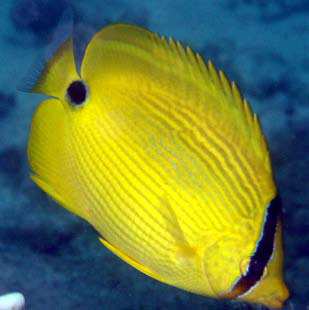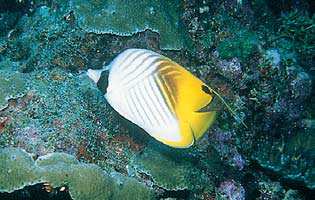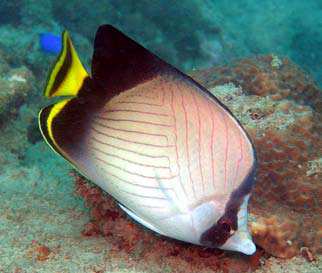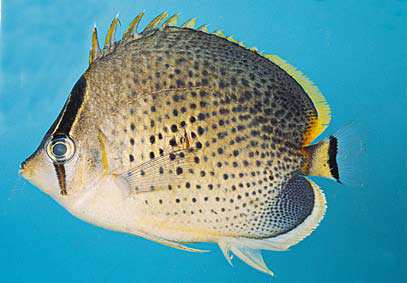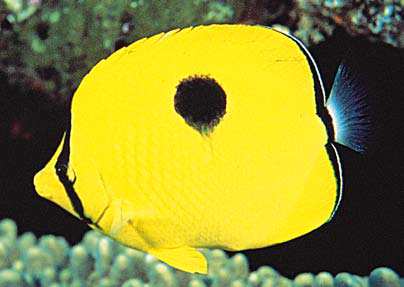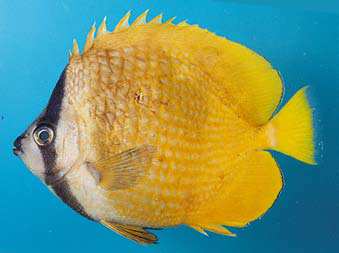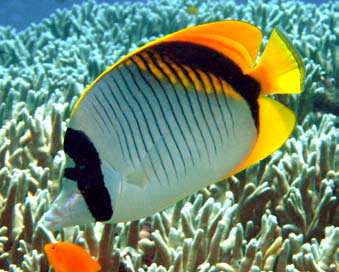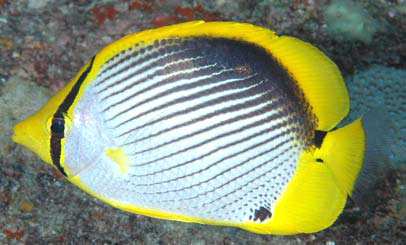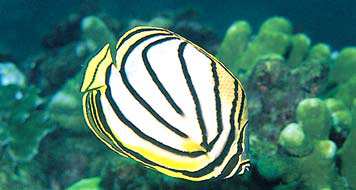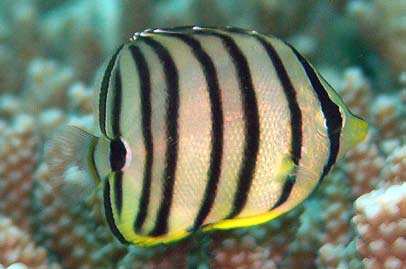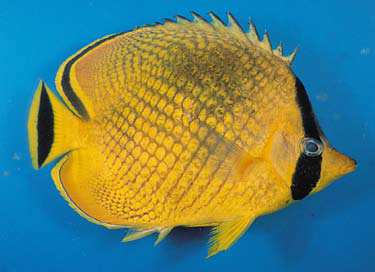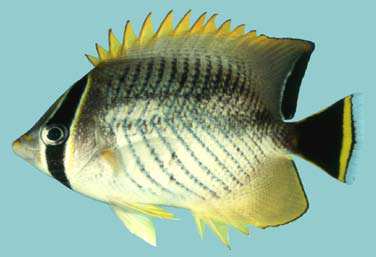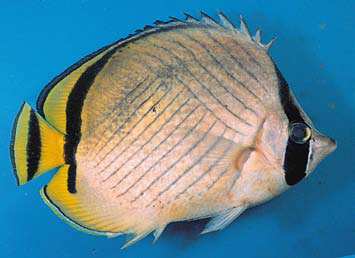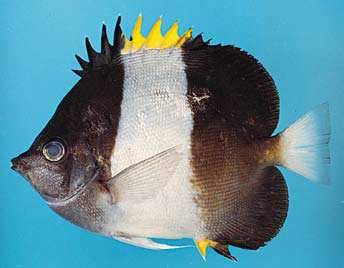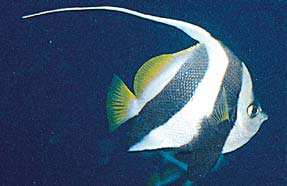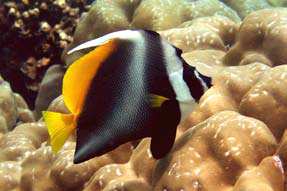CHAETODONTIDAE
Butterflyfishes
By Ukkrit Satapoomin
|
Small-sized fishes (to about 30 cm); body deep and highly compressed; oval to orbicular in shape. Eye moderately small. Mouth very small, terminal, protractile; snout produced to greatly elongate; teeth bristle-like arranged in rows or bands across jaws. Preopercle smooth without strong spine at angle; gill rakers short ranging from 9 to 25 in number. A single dorsal fin, continuous with VI-XVI strong, stout spines and 15-30 soft rays; interspinous membranes deeply incised; anal fin with III-V strong spines and 14-23 soft rays, margin usually rounded or sometimes angular; pectoral fins with 13-15 rays; pelvic fins with I strong spine and 5 rays; caudal fin rounded to slightly emarginated. Scales ctenoid, small to medium sized, extending onto soft portions of vertical fins; axillary scaly process present at base of the pelvicfin spine; Color: greatly variable and very brightly colored, but common ground colors are white, yellow, orange, or brown; frequently with bars or stripes of black or brown; a dark eye-band often present. Color patterns are most diagnostic for species identification. Similar families occurring in the area. Pomacanthidae: a strong spine at angle of preopercle; most of the conspicuous species (with the exception of Centropyge) are larger and more colorful. Scatophagidae: dorsal fin with a deep notch; IV anal-fin spines; mouth not protractile. Zanclidae: the monotypic Zanclus cornutus resembles some species of Heniochus, but easily distinguished by a strongly produced snout, bony supraocular projections, and only VII dorsal-fin spines. Remarks. Generally found on coral reefs, usually in shallow water above depths of 20-30 m. They are usually solitary or live in pairs, but sometimes are found in large aggregations. Feed diurnally on coral polyps, colonial sea anemones, tentacles of tubeworms, small crustaceans, zooplankton, and algae. |

|
|
